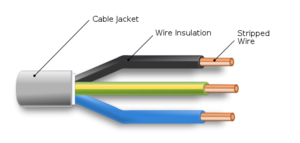D3D Printer Design Process
This document lists D3D Printer Design decisions and reasoning behind them in chronological order. The intention is to make the process as debuggable as possible and facilitate later creation of formal documents such as Design Decision Tree and Conceptual Design diagrams. It follows the D3D_Design_Methodology.
Sources Driving Design Desicions in Priority Order
- D3D_Fusion_printer_design#Higher_Level_Goals
- D3D_Fusion_printer_design#Desired_Attributes
- D3D_Fusion_printer_design#Functional_Requirements
- RepRap Interface Standard
- The shape of the input determines the shape of the design and tests.[1]
Process
Concept Creation
This page was tagged as a candidate for deletion. If this page does not meet our criteria for deletion, please remove this notice.
'
Note Note: We started out this process with concept creation. This deviates from the D3D Design Methodology, but we document it here nontheless.
D3D_Printer_Design#Functional_Requirement nr 1 is that the printer should be buildable in one day, and a parallelizable build is highly desired. A random Youtube search around modularity in CNC machines led to discovering the concept of modular linear actuators, as shown by Alexander Stepanenko in a video. The concept would allow
- ... building linear actuators and other parts at the same time
- ... defining a ubiquitous standard (screw position) interface
Normally, we would reason here around advantages that the concept of modular linear actuators could provide, but OSE found its potential exciting enough to put it directly into D3D_Printer_Design#Functional_Requirements.
Instead of diving into stepwise definition of interface and linear actuator, we decided to grab the following low-hanging fruit:
- Standard Screw Interface: Nema17
- Linear Actuator: Stepper Motor + lead screw
Validation of lead screw + stepper motor
3D Printer Signature
Input: Power, Build material, Supporting surface(s), Instructions Output: Physical object
3D Printer Purpose Statement
A 3D printer is a machine that synthesizes build material into 3D objects according to a series of pre-determined instructions.
3D Printer Examples
We will assume that a mains voltage will power the 3D printer, with the constant shape:


For the build material, we will assume filaments behaving roughly as thermoplastics with the constant shape: ...
- ↑ Cite error: Invalid
<ref>tag; no text was provided for refs namedhtdp